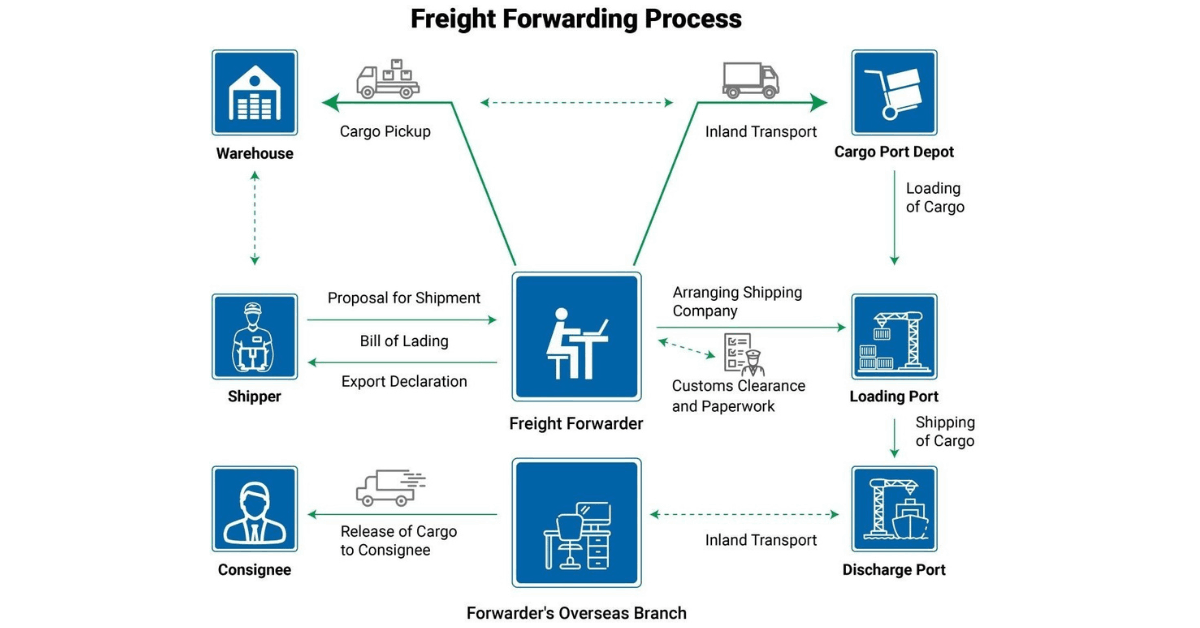The effectiveness of every organization depends heavily on supply chain management. It might take a lot of time and money to move things from one location to another. The procedure can be difficult and complicated, but if you go about, it the right way, it will go easily and have an impact on your entire organization.
Many businesses use outside logistics firms to undertake labour-intensive tasks. Freight forwarding can be useful in this situation. Because it involves shipping and delivery, it is crucial to supply chain management.
Freight forwarding refers to the coordination of transportation. It is a service that assists with shipping goods from one place to another through single or multiple carriers. The service may utilize air, ocean, road, or rail transportation.
The Steps of Freight Forwarding
Establishing your company’s demands and the items you are delivering is the first stage in starting a goods forwarding project. You can choose the best logistics services for your company by following these six steps, which are listed below:
First Step: Export Haulage
Transferring products from a shipper’s location to a freight forwarder’s warehouse is referred to as export haulage. It is the initial phase of goods forwarding and entails packing, scheduling, and getting cargo ready for delivery abroad.
Depending on the agreement, either the shipper or the consignee oversees the export haulage. For instance, the contract can specify that the consignee oversees the package once it leaves the shipper’s address.
If it falls under your purview, you’ll need to make sure your goods are properly wrapped and sent to a goods forwarder for overseas shipping. To have your package delivered to the goods forwarder, you might choose a local transporter.
Second Step: Items Checkpoint
The second phase in the goods forwarding process is the Items Checkpoint. International freight forwarders examine a shipment’s contents after it has arrived to make sure they match what was initially shipped.
The checkpoint for items helps to make sure that everything is prepared for travel, labeled, and packed. This procedure entails checking your products for export compliance and verifying that none of the components of your shipment are restricted.
The goods forwarders will look for missing or damaged parts. Any modifications to the original plan will be communicated to you, and they will also advise you on potential solutions. If there are any problems, you will most likely need to replace the cargo.
Third Step: Export Customs Clearance
Obtaining sample approval from the customs authority is referred to as export customs clearance. International rules and criteria vary from nation to nation.
Depending on the nation you’re shipping to, different documentation is needed. Most goods forwarders have customs experts on staff who manage the shipment of your goods.
To handle foreign exports, some nations demand that customs brokers complete training and get specialized licenses. They’ll watch out that no laws or rules are broken during the exporting process.
Fourth Step: Import Customs Clearance
Import customs clearance refers to getting the recipient country’s customs authorities to approve your foreign consignment. Governments have laws that must be followed for you to have all required import licenses, permits, and certificates.
Freight forwarders might take care of this process for you in some circumstances. They may assist you with the paperwork needed to make sure your shipment can enter the nation legally.
Fifth Step: Destination Arrival and Handling
The management and delivery of your shipment to the goods forwarder is concerned with the destination arrival. Prior to shipping your items, you must set up a safe and secure delivery place.
To assure the safe arrival of your package, your forwarder will arrange for a transportation firm to pick up your shipment from the final location. They’ll unload it when it gets there and get it ready for transport.
Sixth Step: Import Haulage
When your shipment gets to the destination, that is when import haulage occurs. Transferring commodities from international goods forwarders to the client is referred to.
Because it guarantees that your package and all its components will arrive intact, import haulage is essential in goods forwarding. Your goods forwarder oversees handling this for you, although they may contract with a local transporter to assist them.

